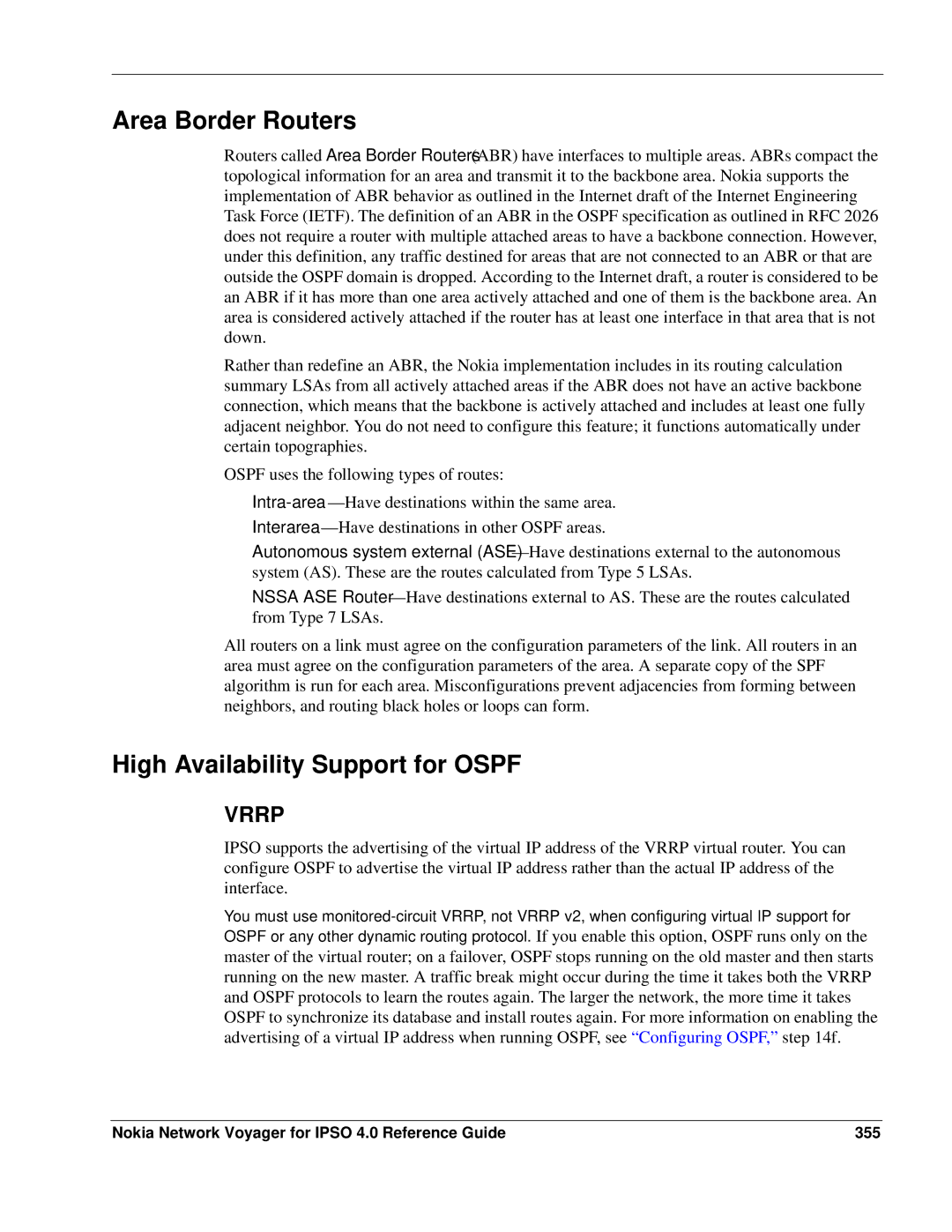
Area Border Routers
Routers called Area Border Routers (ABR) have interfaces to multiple areas. ABRs compact the topological information for an area and transmit it to the backbone area. Nokia supports the implementation of ABR behavior as outlined in the Internet draft of the Internet Engineering Task Force (IETF). The definition of an ABR in the OSPF specification as outlined in RFC 2026 does not require a router with multiple attached areas to have a backbone connection. However, under this definition, any traffic destined for areas that are not connected to an ABR or that are outside the OSPF domain is dropped. According to the Internet draft, a router is considered to be an ABR if it has more than one area actively attached and one of them is the backbone area. An area is considered actively attached if the router has at least one interface in that area that is not down.
Rather than redefine an ABR, the Nokia implementation includes in its routing calculation summary LSAs from all actively attached areas if the ABR does not have an active backbone connection, which means that the backbone is actively attached and includes at least one fully adjacent neighbor. You do not need to configure this feature; it functions automatically under certain topographies.
OSPF uses the following types of routes:
Autonomous system external
NSSA ASE
All routers on a link must agree on the configuration parameters of the link. All routers in an area must agree on the configuration parameters of the area. A separate copy of the SPF algorithm is run for each area. Misconfigurations prevent adjacencies from forming between neighbors, and routing black holes or loops can form.
High Availability Support for OSPF
VRRP
IPSO supports the advertising of the virtual IP address of the VRRP virtual router. You can configure OSPF to advertise the virtual IP address rather than the actual IP address of the interface.
You must use
Nokia Network Voyager for IPSO 4.0 Reference Guide | 355 |
